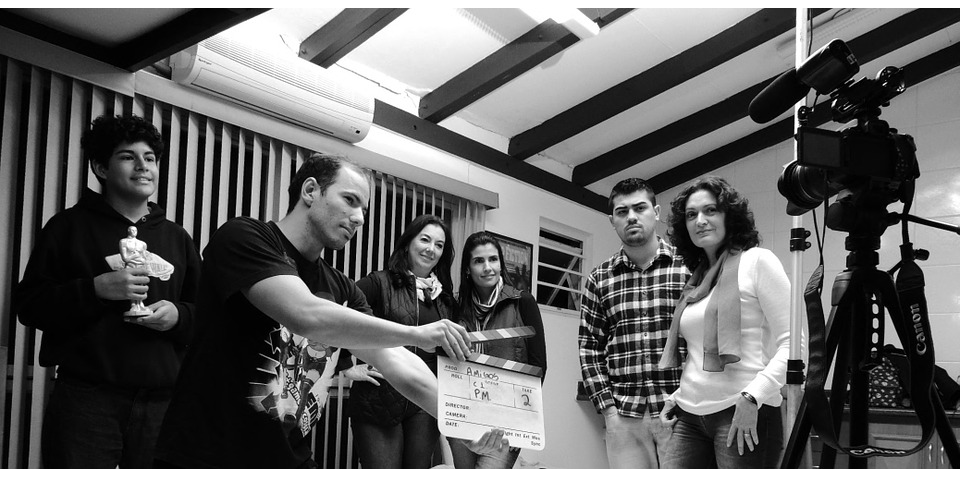How to Make a Documentary: Step-by-Step Instructions
More than any other medium, documentaries have the power to impact reality in a meaningful way. Take Blue Planet II as an example – it’s one of the most breathtaking and memorable documentary series of the decade. More importantly, it played a significant part in raising global awareness on the problem of single-use plastic. More and more countries are joining the fight against this harmful pollutant by banning it outright, inspired in part by the earth’s beauty as presented in the film.
Your first documentary might not have such a drastic effect on society, but it can have the power to positively impact the lives of its protagonists and the audience. An excellent documentary sheds light on meaningful topics. It entertains us, yet it also enriches our knowledge and compels us to see the world through wiser eyes. This guide will help you understand the basics of creating a doc. It goes over each step of the creation process from conception to distribution. Read on and get the headstart you need to make your documentary the best it can be.
1. Conceptualizing your documentary

The first thing you need to do when creating a documentary is to establish its theme, tone, and message. It’s essential to consider your target audience and think about what topic would be engaging to them. No one wants to watch a documentary on something mundane unless you’re presenting never before seen information or approaching the subject from an unexpected angle.
While a documentary portrays factual events, it does so from a point of view and with a takeaway. As a novice documentary filmmaker, you likely won’t have the resources or budget to tackle broad issues. It’s best to focus on a smaller facet to illustrate a more significant problem while still getting your message across. For example, you could address the problem of climate change by examining what impact warming oceans have on a fisherman’s family in a remote village.
Get to know your subject matter
Once you have a broad idea in mind, it’s time to do preliminary research. Google is a good place to start. However, you’ll soon realize you need more in-depth coverage of the topic and knowledgeable sources to back your message up with irrefutable facts. Consult your local library, both as a source of physical books on the subject and a means of accessing online scientific publications. If you’re covering a local story, track down old newspapers that cover it and make a list of people you’ll eventually want to interview.
The next step is to determine what’s already been done on the subject. Watch news footage to see what angles reporters have already covered. Watch documentaries on the topic if there are any. Also, be sure to examine documentaries with a similar message by acclaimed directors to get inspired. Doing preliminary research and acquainting yourself with existing materials will help you flesh out your idea and come up with an approach others haven’t considered.
Ask others for their input
At this stage, you shouldn’t hesitate to talk about your idea with family, friends, or interested colleagues. Their input will be valuable in shaping your documentary and can help you discover facts or different takes you haven’t considered before. Once you’re convinced that the documentary is something people would love to see, it’s time to write a synopsis. This document outlines what your documentary will be about in broad terms. Later it can evolve into a proposal that outlines involved parties and how you plan to distribute the film.
2. Filming gear
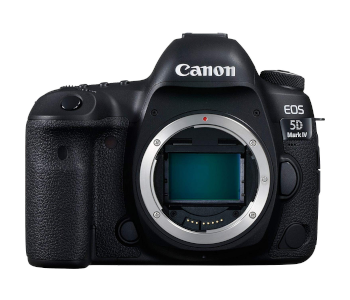
As your concept is starting to take shape, it’s time to consider the equipment you’ll need to bring it to life. Nowadays, the budget-conscious filmmaker can use a smartphone and still tell an award-winning story. However, you’ll want to consider investing in or borrowing professional gear if you wish your doc to have a cinematic feel. Here’s what you need:
A camera – What kind of camera to use depends on the nature of your documentary. You can go for a DSLR or mirrorless camera if you’re mostly filming interviews or footage in controlled situations. Scenes that require you to be on the move and still get usable shots are best recorded with an action camera that has good built-in image stabilization. Or you can use a camcorder if shakiness is less important than maintaining excellent video quality at a narrow viewing angle.
A tripod – tripods are essential for keeping your camera stable. They can carry a lot of weight, and their ball heads make moving the camera easy without having to reposition it. Consider a handheld gimbal if your camera isn’t heavy and shooting requires you to relocate often and still produce smooth footage.
Camera lenses – a camera lens is an essential tool for framing your shots. Zoom lenses are your best bet if you only have a budget for one since they cover a wide array of possibilities from establishing shots to close-ups. Nature documentaries require special telephoto lenses that let you zoom in on your subjects without disturbing them. Docs dealing with insects or the intricate workings of a machine are shot with macro lenses.
Lighting – what lighting to go for depends on the situation. A three-point lighting setup is best when you’re interviewing someone in a studio environment. You won’t have that luxury when filming on location. At the very least, you should bring along a reflector to focus the light and manage overly bright situations during the day. Shooting in low light or at night requires on-camera or portable video lights.
Audio equipment – If there’s anything you ought to take to heart from the gear segment it’s to never skimp out on your microphone! Audio conveys the most nuances and can turn your documentary from a form of entertainment to a profoundly impactful experience. Microphones built into cameras are light years behind even cheaper dedicated models. It’s crucial to have a mic that will capture the audio as clearly as possible since you’ll likely get only one chance to do so.
Lavalier and shotgun are the two main types of microphones you need to have. Lavalier mics attach to the clothes of people you’re interviewing and make them sound clear no matter where you place the camera. Shotgun mics record audio focused in front of them while ignoring noise coming from the sides and back. Using them ensures you can capture specific sounds while ignoring distractions.
Monitoring headphones are the last essential bit of audio gear. Putting them on allows you to hear the audio as the audience will hear it. This helps you ensure quality standards while saving you time and money since you can identify issues before they become problems and force you to re-shoot a scene.
Editing hardware & software – you have to have a computer and a video editing program to turn raw footage into a coherent documentary. Any PC or Mac made in the last five years will do. Even so, consider investing in more RAM and a better video card if the editing process is too sluggish. Your program of choice should be easy to use if you’ve never done editing work before. There are many free programs to choose from, or you can buy premium software if the scope and production quality of the documentary requires advanced editing.
Miscellaneous essentials – these include glare-reducing filters for your lens, backup batteries, additional storage drives, and equipment bags.
3. Pre-production
With an outline of your documentary established, you can move on to fleshing the synopsis out and start thinking about logistics.
The treatment

The first step is to write an in-depth description of the doc known as the treatment. In it, you describe what the film is about, what message it is conveying, and who the main characters are. The treatment explains the documentary’s flow, describes how you envision specific scenes, and describes the documentary from start to finish.
Creating a thorough treatment is essential to keeping you on track. It also becomes important later on when you’re pitching the documentary to investors who are interested to learn more after reading the proposal. Note that the treatment isn’t set in stone. You’ll add to it and modify initial expectations as you gain access to new information and the events you’re capturing unfurl.
Additional research
Now it’s time to do location research. Scope out the locations where the doc will take place and make sure you’re allowed to film there. Inquire about needed permits and how far in advance you need to schedule to avoid complications later on.
Next, consider the people who will appear on screen. Do additional research on your main characters and come up with interesting interview questions. Your doc will benefit from contrasting perspectives and the input of professionals. For our climate change example, experts on the subjects as well as climate change deniers or people who benefit from a decrease in fishing activity would make compelling characters.
Your film doesn’t have to rely on original footage alone. It’s wise to track down reports shot by news media and amateur footage, especially if you’re covering a historical event. Also consider audio recordings, propaganda posters or campaigns, written testimonies, or court hearings. You can incorporate all of these in post and make the documentary more dynamic.
The storyboard
Even with a thorough treatment, you can’t start hooting without having a concept of what your scenes will look like. That’s why you need a storyboard, a document that visually outlines the flow and appearance of the movie. It’s made up of sketches or preliminary shots with necessary annotations. These help you visualize where the camera will be, what you’ll film the characters doing, where they’ll be facing, etc. Like the treatment, your storyboard is subject to change as shooting commences.
Make a budget
It’s important to create a rough outline of your expenses, even if you’re creating the documentary by yourself on a shoestring budget. Knowing how much money you’re working with lets you structure the film with budgetary constraints in mind. Here are some questions you need to consider when structuring your budget:
- Do you have to travel to far-away locations to film crucial scenes?
- How high are your crew expenses?
- Are your experts charging a fee to appear in the film?
- How much do you need to set aside for permits, copyright claims, and liability insurance?
- Many documentaries shot after the fact benefit from recreations of significant events. Would yours? If yes, how much do you have to set aside for actors, props, and costumes?
- Are you paying a professional to edit the doc?
- What kind of distribution and marketing do you want the documentary to have?
Put together a crew
Making a documentary from scratch is a monumental task. You could shoulder the burden alone, but that leads to a lot of stress and, more often than not, amateurish results. A better idea is to recruit a specialized crew to handle key roles like camera management, audio, lighting, and editing, so you’re free to focus on management.
Crew members don’t have to be professionals – helpful siblings or an aspiring cameraman can do wonders in a pinch. You’ll be fine as long as everyone’s on the same page about the crew’s expected roles and actual capabilities. The bigger your budget, the better the crew you can employ. Don’t dismiss eager volunteers in that case either – they may develop into professionals you’ll appreciate knowing and working with later in your career.
Develop a shooting schedule
Having a detailed schedule in place becomes increasingly more important as you’re drawing close to the production stage. Time management is key to keeping production on track and nipping potential scheduling conflicts in the bud. A documentary’s schedule is more likely to change a regular movie’s, but here’s what you can do in advance to make the production run smoothly:
- Plan when, where, and what should be shot for each day of production
- Secure tickets and make reservations when shooting at far-away locations
- Determine which crew members are needed on a given day and supply individual schedules
- Arrange interviews with key characters well in advance
- Obtain all necessary permits and documents to be able to shoot on location
- Make sure no events are taking place on site during filming days (unless the event is the subject of the documentary)
- Make sure your crew will have access to facilities and take care of catering
4. Production
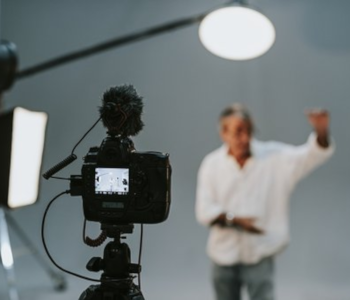
With everything else in place, it’s finally time to start making your documentary!
The devil is in the details
The golden rule of any kind of filmmaking is to always record more footage than you think you’ll need. The same goes for documentaries, whether you’re filming interviews, B-rolls, or covering events as they develop. This rule is especially useful when you’re recording a live event and don’t have time to determine what’s worth capturing and what isn’t.
Having excess footage to work with in post lets you discover subtle details that help your documentary paint a more realistic picture. Examples include unexpected character reactions, moments when people expose something new about their personality, or unintentional things that happen after your main event of interest is over. It’s especially important to keep the camera rolling when filming nature documentaries as you never know what an animal might do next.
Get the interviews right
Your film documents real events, and interviews with people who have first-hand experience with your subject strengthen your take on the story. It’s important to do your research thoroughly before recording an interview. You must demonstrate to the person you’re talking to that you are interested in their experiences and want to help express them. The best way of doing so is by asking informed and poignant questions that shed light on the interviewee’s knowledge, opinions, or state of mind.
You can’t expect to produce a genuinely memorable interview in one go. Conduct preliminary interviews to get to know your main characters. Don’t just focus on what they have to say about your subject – try to portray them as the multi-faceted people they are. Get their take on a situation before, during, and after it happens. Some documentaries may require you to do follow-up interviews to gauge the long-term impact an event had on the characters.
Tell the story with shot choices
Your doc could have fascinating subject matter and still be boring to watch if the only thing shown is a back and forth between you and an interviewee. That’s why it’s essential to spice the film up with a variety of scenes and shooting techniques. Here are the most important ones:
Establishing shot – as its name suggests, this wide-angle shot is used to introduce the audience to a location. It encompasses a vast landscape which provides context to the doc. People are usually absent from establishing shots. If they are in one, they are tiny in comparison to the overall scene. Shots of the coast, a panoramic view of the village, or an aerial shot of fishing boats out at sea are potential establishing shots for our climate change film.
Close-up – the close up is your go-to shot when conveying a character’s emotions or focusing on what they have to say. A medium close-up frames the shot to encompass a person’s shoulders, head, and neck and is typical for TV news. A standard close-up zooms in more, showing the neck and a hint of shoulders. A big close-up focuses on the character’s face and shows it in detail.
B-roll – the B-roll is secondary but indispensable footage shot to fill in gaps between your doc’s central themes. It comes in handy when covering up mistakes, leaving room for narration, and giving the film extra character. Examples include men catching fish, children playing in the streets, or melting glaciers.
Record supplementary sounds
Like the B-roll, sound related to but not created as the result of a scene is helpful in establishing the doc’s atmosphere. Spend some time recording busy intersections, bustling harbors, or sounds coming from the wilderness to get that extra layer of immersion.
Seize the moment and have a backup plan
Breathtaking visuals and a cinematic feel are the hallmarks of many high-quality documentaries. While you should strive for a visually consistent and artistic experience, that doesn’t mean you can’t break with convention if the situation calls for it. A confrontation between rivals, an unexpected natural disaster, or escalating violence are events you might not have prepared for but have to record anyway. Perfectly-framed shots give way to shaky footage and muffled audio when the integrity and completeness of your movie are on the line – don’t be afraid to embrace them.
Many things can go wrong when filming a documentary. An event might happen earlier than expected and you’ll miss it. People might cancel an interview you thought was set in stone because of fear or other reasons. You can’t do anything about unforeseen circumstances, but you must have a contingency plan as a response. Establish connections with a broader set of people than you plan on interviewing. Get in touch with local media to obtain backup footage. In short, do everything necessary to keep the documentary on track even when there are bumps in the road.
Keep a production journal
Remember how we said treatments and storyboards undergo changes during production. Your journal is a means of making these changes as you’re creating the doc in earnest. Your journal is useful for recording what you’ve accomplished during the day as well as interesting observations or information that’s surfaced during the shoot. Regularly updating the journal is the best way of creating a side-by-side comparison of your goals and actual progress.
The journal also acts as a reminder to follow up on leads. An interviewee might have said something you weren’t aware of or suggested a new avenue of investigation. Immersing yourself in the story and experiencing it first-hand as you’re shooting might spark new ideas you’ll want to jot down before forgetting. All these tidbits can help the documentary become more authentic and more engaging.
5. Post-Production
Once you wrap up the last day of shooting, it’s time to start putting together all of your materials into a documentary that captivates its audience. Revising and expanding on your proposal is a good place to start. You know what materials you’re working with now, which makes it easier to structure the movie so it flows naturally and follows a logical progression from beginning to end. This revised overview will also help you determine what the documentary may be missing.
Create supporting visuals
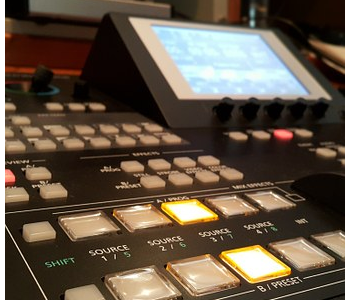
Scientific data adds authenticity to your narrative, so it’s common practice to back your claims up with statistics and animations. Merely mentioning the numbers is boring – you have to spice things up by presenting them in a way the audience will find palatable. That could involve simple graphics like pie charts and line graphs, or visual comparisons that make abstract concepts more relatable.
Documentaries that explore machinery or the workings of the human body benefit from 3D animation that visualizes certain processes. Consider the services of a 3D artist if such an addition would be beneficial.
It’s tempting to make heavy use of graphics & animations to make your claims seem more plausible. However, less is more applies here too, so choose only those assets that are indispensable for getting your point across while letting the audience piece together the rest.
Script the narrative
An overarching narrative is one of the essential steps when turning your doc into a cohesive whole. The narrative eases your audience into the story and guides them as interviews, live scenes, and other segments change. Apart from the characters and scenes themselves, narrative is the strongest conveyor of your message. Shape it accordingly.
Then there’s the matter of having someone read your narrative out loud. A trained voice actor is the obvious choice, but an acting student or aspiring news anchor will do fine too. The better-qualified your narrator, the less input you should give them.
Select appropriate music
Think of the feelings and emotions you want your documentary to stir up. Then, find or create music which suggests such responses. The easiest solution is to search the internet for royalty-free music. Another good alternative is to ask someone to compose an original piece or even an entire score for your film. Using copyrighted music is the costliest and most complicated option, but sometimes it’s unavoidable.
Edit the documentary
The building blocks are there. Now all that’s left is to arrange them in a way that makes sense and keeps the audience glued to their seats until the end. The editing process consists of using your program of choice to arrange, trim, add effects to, and export the documentary. Trimming, in particular, is a fine art. You’ll want to cut out anything that doesn’t add value to the story but also have to refrain from omitting footage that clashes with your worldview.
It is imperative to save your work often and onto multiple drives during editing. That way you’ll have backup copies should the worst happen. You’ll also have access to the film during different editing stages and can make changes without having to start over from nothing. You can learn more about video editing from this article.
6. Getting your documentary into the world
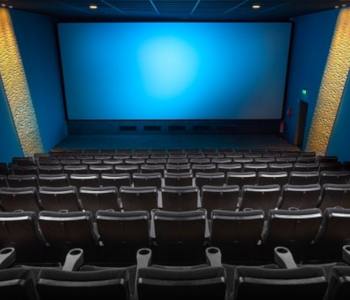
Congratulations, you’ve created a documentary; but now what? No one’s going to pat you on the back or give you an award if you don’t put that doc out there for the world to see! How you’ll go about it will depend on your ambition, the strength of the film’s presentation, and whether or not it holds up to the scrutiny of the public as well as your peers.
Do a private screening
The people who encouraged you to make the documentary should be the first to experience it. Showing your work to a small, supportive audience is a great way of testing the waters. Ask the audience to give their honest opinions and constructive criticism. If someone sympathetic to the project can point out rough bits or inconsistencies, a less forgiving person won’t be as gracious. Use the knowledge you gain from the screening to reexamine the documentary and make adjustments if possible.
Make people aware of your documentary
Positive first impressions are a great incentive to start spreading the word about your masterpiece. The digital age allows you to build up an audience and create hype. You can advertise the movie on social media sites, create its Facebook group, and even its own website as interest increases. You could contact local cinema clubs or people interested in the doc’s subject matter and organize screenings for them. Encourage people to leave reviews of the movie, but don’t take harsh criticism to heart.
It takes time to get the ball rolling and expose your creation. You can help things along by being proactive – interact with the doc’s existing fanbase, create a trailer for it, and even start thinking about promotional material like posters or shirts.
It’s never too early to start your marketing campaign. Experienced documentary makers already release tidbits about the film during production or even hire people to document the shoot and create making-of material. It’s fine if you start thinking about the doc’s exposure after you’ve completed it when starting out, but keep a more aggressive plan in mind for future releases.
Festivals
Film festivals attract large crowds and being screened at one gives a documentary greater chances for success. Your entry doesn’t even have to win an award – if there’s enough festival buzz surrounding it, sponsors may want to get on board regardless.
Picking a festival involves research. You’ll want to apply to festivals which attract the doc’s target audience. Some festivals charge hefty application fees, so consider that when planning the budget. Častly, it’s common practice to pre-screen applicants before making the final selection. These screenings happen well in advance of the festival itself, so make sure you’re applying in time.
Further distribution
Taking your documentary on the road and having it featured in festival line-ups opens up the doors to distribution and real money-making opportunities. Be ready for them by preparing press kits that contain promotional materials, the documentary’s synopsis and credits, and any accolades it has already received. The press kit is your sales pitch, so make it stand out and mention every award or positive feedback from renowned critics.
Consider a distributor’s offer seriously once one finally comes. Getting a large initial payout is great, but ask yourself how the distributor will treat the movie once you sign. Does the distributor have a proven track record? Do other filmmakers trust them? Does the distributor allow input on marketing and overall presentation? Affirmative answers to these questions can make the difference between a world-changing documentary and one that’s languishing in someone’s to-watch queue.

